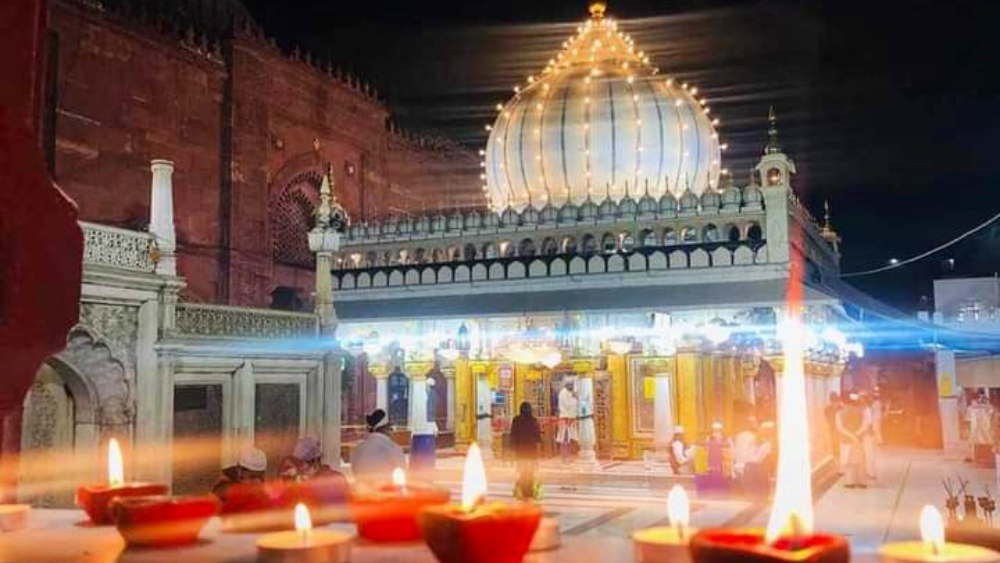
Festivals are events that unite people from all castes, religions, and ideological views. And according to Dr. Shujaat Ali Quadri, the Chairman of the Muslim Students Organization of India, Diwali is one such holiday that has a long tradition of bringing people together.
The shrine of Hazrat Nizamuddin Auliya in Delhi was illuminated on the auspicious occasion of Diwali and welcomed everyone to partake in the festive mood.
The Dargah Hazrath Nizamuddin was exquisitely decorated on Monday as India as a nation kicked off the festivities with lighting Diwali diyas. People from far locations lit diyas in each corner of the dargah and prayed for peace throughout the nation.
Hindus visit the dargah every year to celebrate the festival of lights known locally as Eid e Charaghan by lighting diyas and distributing sweets, according to Nazim Nizami, gaddi nasheen of the shrine. As a sign of Hazrat Nizamuddin's blessings, he added, "They also carried some diyas or candles to their homes."
Although the dargah itself does not organise the festival, Nazim Nizami stated that the history of the Diwali celebration on the dargah predates the dargah itself. Hindu brothers voluntarily show up, light diyas, and hand out candy. Locals lend a hand and participate in their celebration since it is a kind act intended to foster feelings of brotherhood and love, he said.
Some individuals think that the practise of burning diyas at the dargah began as an appeal for peace during the mediaeval era's wars between numerous rulers and local chieftains.
In his epic on Hazrat Nizamuddin, historian Khwaja Ahmed Nizami describes how people celebrate Diwali (also known as Jasn e Charaghan or Roshni e Zeest).
Numerous poems in Persian and Braj celebrating "Rang" with his beloved Auliya have been written by Amir Khusrau, a Sufi poet and disciple of Mehboob-e-Ilahi Khwaja Nizamuddin Auliya. As he states in a pahalavi taslees (a stanza of three lines), the "Roshni-e-Zeest" was also dear to him.
Quadari is cited as saying, "He writes, "Zee astin rang-e-zeest, Zee astin roshni-e-zeest, Barmala mee azghaf jashn-e-durai."
"These two festivals are very special to me since one festival speaks of the colours of life and the other lists the light of life," he added. During the Laxmi Poojan celebration, diyas are lit along the pathways leading to the temple and all around the Muslim chaddar. Not just on Laxmi Poojan, but also on Bhai Dooj and other religious holidays, the mausoleum would be crowded with people wearing vibrantly coloured clothing.
In the dargah, evening prayers are chanted in the presence of lamps as part of the Dua-e-Roshni (prayer of light) tradition. The Times of India was informed by some non-Muslim devotees who arrived at the dargah with diyas the day before Diwali that they did not want to be identified because their love for Nizamuddin was personal to them. They did note, though, that the visit to the dargah was unrelated to Islam. It has to do with the peace that can only be found here.
Notably, Indresh Kumar, a member of the Muslim Rashtriya Manch Rashtriya Swayamsevak Sangh (RSS) National Executive, visited Hazrat Nizamuddin Dargah on Saturday and kindled earthen lamps inside the shrine's grounds in preparation for Diwali. Muslim Rashtriya Manch, the Muslim branch of the RSS, urged for stability and progress in the nation.